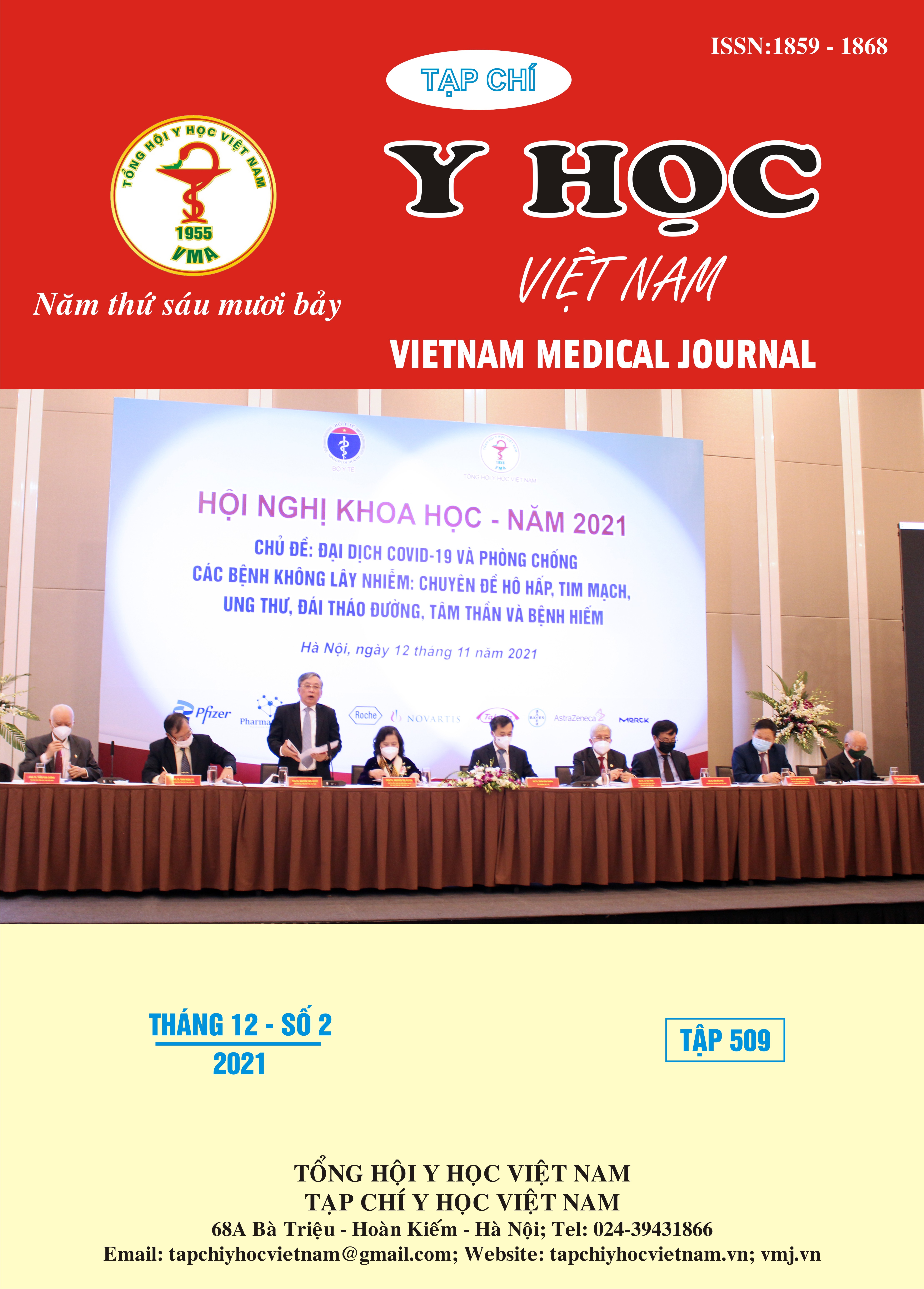THE CLINICAL AND ELECTROPHYSIOLOGICAL CHARACTERISTICS OF PATIENTS WITH WPW SYNDROME WITH ATRIAL FIBRILLATION
Main Article Content
Abstract
Objectives: To describe the clinical and electrophysiological characteristics of patients with WPW syndrome with atrial fibrillation and to compare the clinical and electrophysiological characteristics of patients with Wolff - Parkinson - White with and without fibrillation. atrium. Methods: The study was conducted in 49 subjects, including 18 patients with atrial fibrillation in clinical or electrophysiological studies and 31 patients with Wolff - Parkinson - White syndrome. The patients were selected in accordance with the study requirements. Research results: The study showed that in the group of atrial fibrillation in WPW syndrome: common age was 49.2 ± 15.6 years old, male accounted for a high rate of 83.3%, cardiovascular disease group was associated with hypertension, functional Sinus node function and intracardiac conduction were normal, the refractory time of the accessory pathway was short, forward 247.7 ± 29.0, retrograde 279.0 ± 24.0 P<0.05. An accessory pathway and a right-sided location were common in the group with atrial fibrillation. Conclusions: Male sex, comorbidities with hypertension, hyperthyroidism, and short refractory duration of accessory conduction pathways may be factors that may influence the occurrence of atrial fibrillation in WPW syndrome.
Article Details
Keywords
Accessory pathway, Atrial fibrillation, Atrioventricular re-entry tachycardia, Cardiac electrophysiology
References
2. Obeyesekere MN, Leong-Sit P, Massel D, et al. Risk of arrhythmia and sudden death in patients with asymptomatic preexcitation: a meta-analysis. Circulation. May 15 2012;125(19):2308-15. doi:10.1161/circulationaha.111.055350
3. Duckeck W, Kuck KH. [Atrial fibrillation in Wolff-Parkinson-White syndrome. Development and therapy]. Herz. Feb 1993;18(1):60-6. Vorhofflimmern bei Wolff-Parkinson-White-Syndrom. Entstehung und Therapie.
4. Al-Khatib SM, Arshad A, Balk EM, et al. Risk Stratification for Arrhythmic Events in Patients With Asymptomatic Pre-Excitation: A Systematic Review for the 2015 ACC/AHA/HRS Guideline for the Management of Adult Patients With Supraventricular Tachycardia: A Report of the American College of Cardiology/American Heart Association Task Force on Clinical Practice Guidelines and the Heart Rhythm Society. Circulation. Apr 5 2016;133(14):e575-86. doi:10.1161/cir.0000000000000309
5. Chen M, Feng X, Sun J, et al. Risk factors responsible for atrial fibrillation development between symptomatic patients with concealed or manifest atrioventricular accessory pathways. International journal of cardiology Heart & vasculature. Jun 1 2015;7:69-75. doi:10.1016/ j.ijcha.2015.02.010
6. Szumowski L, Orczykowski M, Derejko P, et al. Predictors of the atrial fibrillation occurrence in patients with Wolff-Parkinson-White syndrome. Kardiologia polska. Sep 2009;67(9):973-8.
7. Acharya D, Rane S, Bohora S, Kevadiya H. Incidence, clinical, electrophysiological characteristics and outcomes of patients with Wolff-Parkinson-White syndrome and atrial fibrillation. Indian pacing and electrophysiology journal. Jan-Feb 2020;20(1):3-7. doi:10.1016/j.ipej.2019.12.015
8. Ma L, Li Y, Wang Y, Wang X, Kong J, Wang L. Relationship between accessory pathway location and occurrence of atrial fibrillation in patients with atrioventricular re-entrant tachycardia. Experimental and clinical cardiology. Fall 2004;9(3):196-9.
9. Waspe LE, Brodman R, Kim SG, Fisher JD. Susceptibility to atrial fibrillation and ventricular tachyarrhythmia in the Wolff-Parkinson-White syndrome: role of the accessory pathway. American heart journal. 1986;112(6):1141-1152.


